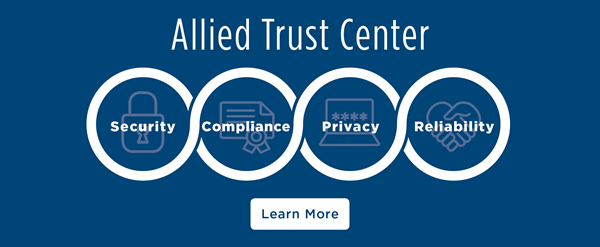Cybersecurity Awareness Month Series [PART 3]: What is ‘Privacy by Design’ and Why Does it Matter?
View Part 1 here: 5 Password Protection Fallacies
View Part 2 here: Data Compliance in a Digital Era
View Part 4 here: 3 Tips to Build Consumer Trust on Data Security
The rapid expansion of online account usage has made us all a little more sensitive to potential data exposure. According to 2020 BAI research, 38% of consumers across all generations report that their biggest frustration with digital banking remains the fear of fraud and security concerns.
Establishing proactive privacy practices will secure and protect your institutions’ and consumers’ digital data against outside threats, which will in turn strengthen consumer trust and loyalty.
What is ‘Privacy by Design’?
The ‘Privacy by Design’ framework has become a universally -recognized standard for protecting data. Following the methodology outlined in this approach will help to ensure your data remains as secure as possible, in a compliant, consumer-focused way.
The proactive privacy and security methods identified in this framework include the following:
- Allocate adequate resources and dollars toward data security and privacy. A data compromise can put your institution’s reputation and financials at risk, so it’s important to establish tools and processes that will proactively protect data against exposure or theft.
- Ensure data remains secure throughout its entire lifecycle – from collection, to storage, to disposal. This includes data encryption, access controls, and destruction.
- Embed privacy components into all systems and channels carrying secure data to double -down on protections.
- Establish default privacy settings, in case users do not establish their own.
- Maintain privacy practices that are both strong and user-friendly. Do not compromise privacy or security for the sake of functionality or user experience.
- Document risk assessments which identify potential risks and comprehensive measures taken to mitigate those risks.
- Communicate data security goals and practices so employees and consumers understand their need and value, as the visibility and transparency are essential to establishing accountability and trust.
- Have outside parties test and validate the strength and compliance of all data privacy settings and processes.
- Above All: Keep your employees and consumers top-of-mind when establishing your privacy settings – establish strong defaults, communicate well, and build user-friendly options.
Why Does it Matter?
Establishing strong data privacy practices, such as the ‘Privacy by Design’ principles, can reduce compliance risk and address financial and attrition concerns. This is especially true for financial institutions, which face heightened regulatory scrutiny and an increasingly challenging competitive landscape.
The upfront planning and resources it might take to create strong data privacy practices are nothing compared to the benefits your institution will experience, which can include:
- Reduced compliance risk
- Prevented breach losses and liabilities
- Strengthened consumer trust, confidence, and loyalty
Allied Solutions has experienced the firsthand value of committing to a strong, customer-centric data privacy framework. Visit the "Allied Trust Center" to learn more about our data security practices.

